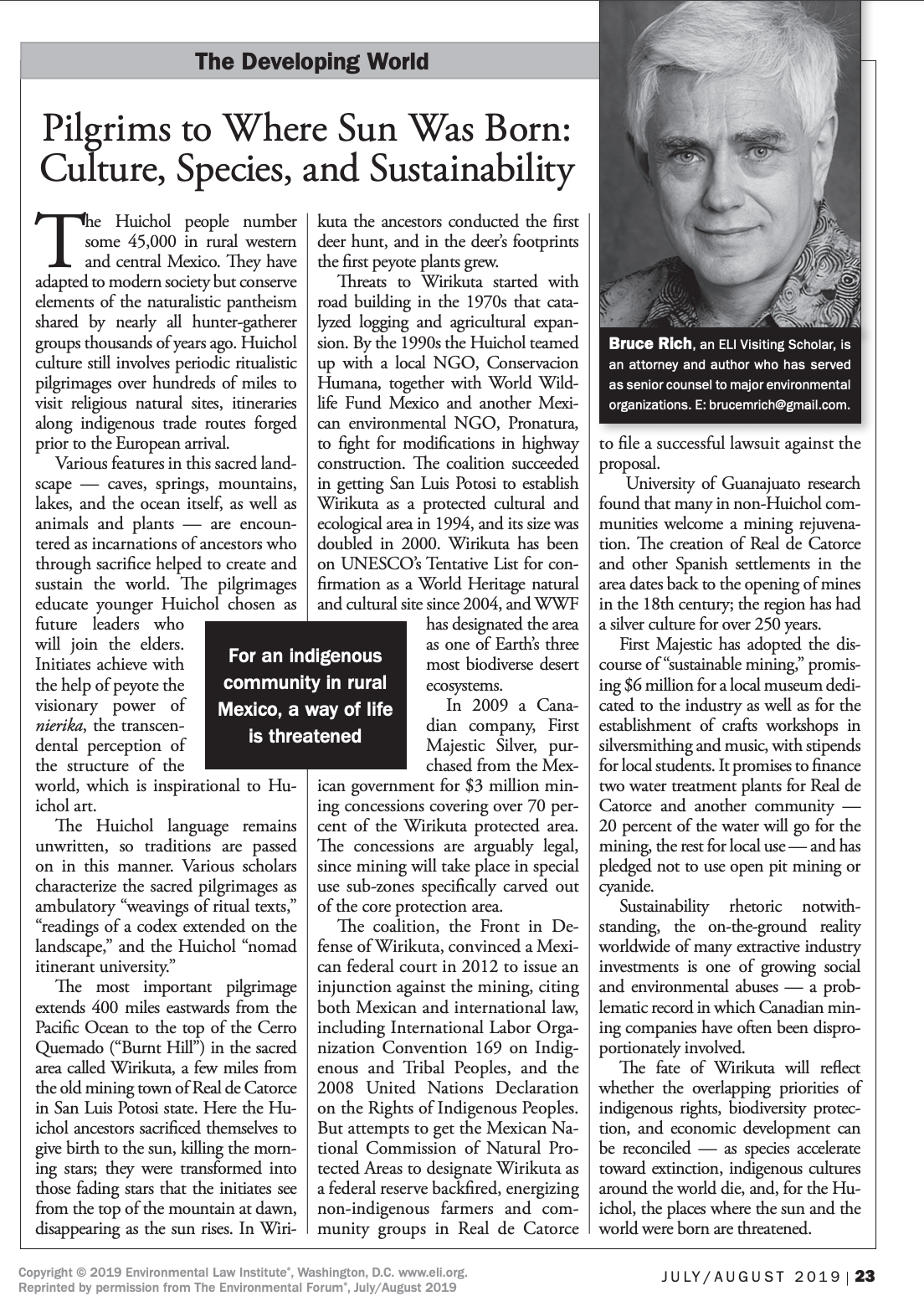- Bruce Rich
- Environmental Forum
- July/August 2019
- p. 23
The Huichol people number some 45,000 in Western and Central Mexico. Huichol culture involves periodic, ritualistic pilgrimages over hundreds of miles visiting sacred natural sites, itineraries which were also pre-Hispanic indigenous trade routes. Various features in this sacred landscape-- caves, springs, mountains, lakes and the ocean itself, as well as animals and plants--are encountered as incarnations of ancestors who through sacrifice helped to create and sustain the world. The most important pilgrimage extends 400 miles eastwards from the Pacific Ocean to the top of the Cerro Quemado (“Burnt Hill”) in the sacred area called Wirikuta, a few miles from the old mining town of Real de Catorce in San Luis Potosi state. Here the Huichol ancestors sacrificed themselves to give birth to the sun, killing the morning stars; they were transformed into those fading stars that the initiates see from the top of the mountain at dawn, disappearing as the sun rises. In Wirikuta the ancestors conducted the first deer hunt, and in the deer’s footprints the first peyote plants grew.In 2009 a Canadian company, First Majestic Silver, purchased from the Mexican government for $3 million mining concessions covering over 70 percent of the Wirikuta protected area. The mining company promises “sustainable mining” and local community assistance, and has pledged not to use open pit mining nor cyanide. Sustainability rhetoric notwithstanding, the on the ground reality worldwide of many extractive industry investments is one of growing social and environmental abuses—a problematic record in which Canadian mining companies have often been disproportionately involved. The fate of Wirikuta will reflect whether the overlapping priorities of indigenous rights, biodiversity protection, and economic development, can be reconciled.



